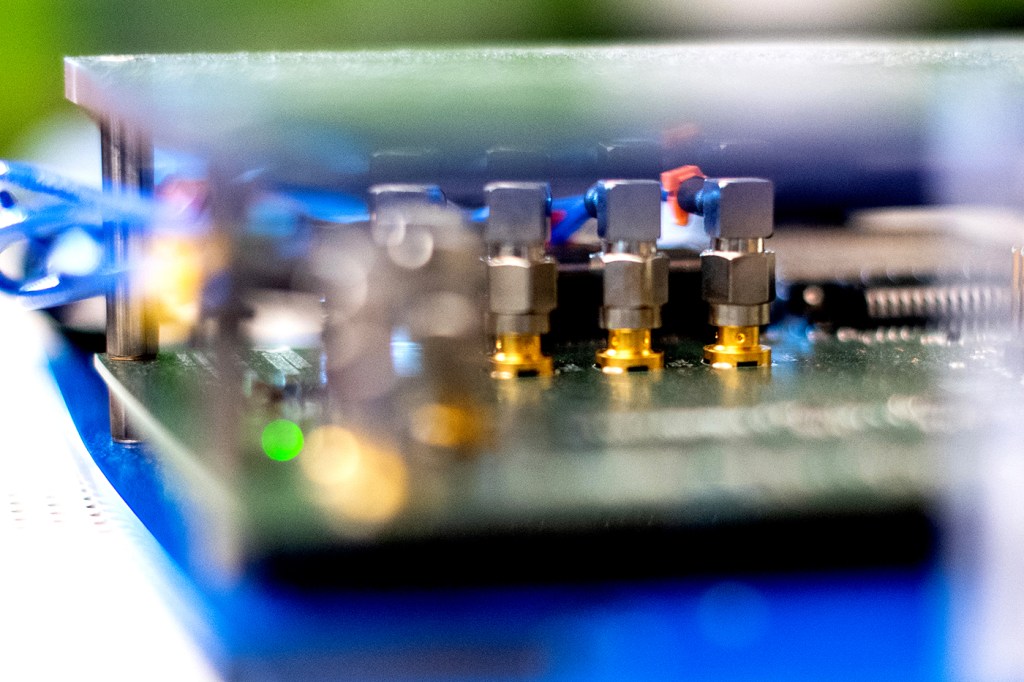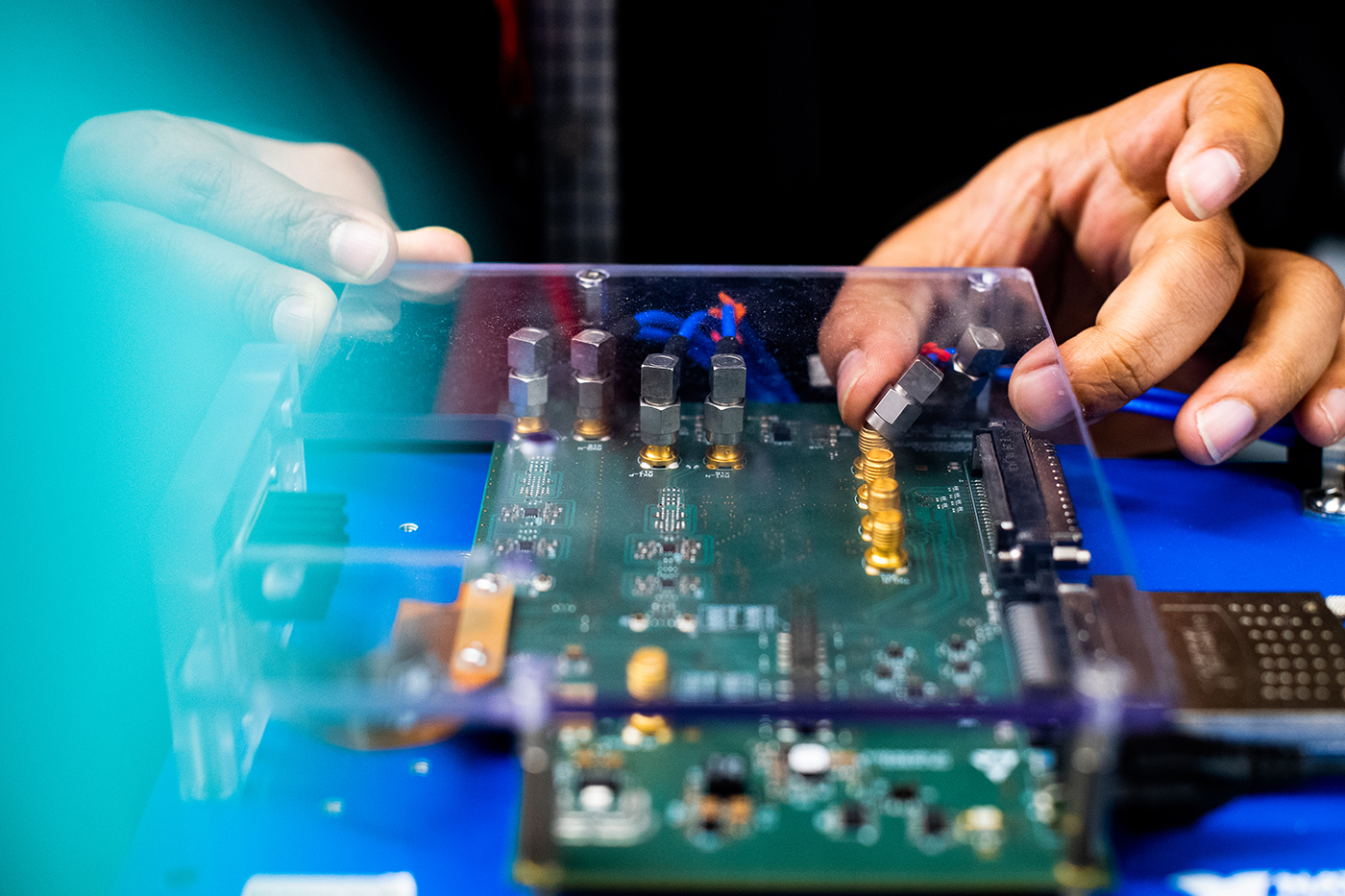‘One-of-a-Kind’ Platform Could Help Usher in 6G Technology

When we imagine what the coming decades will bring in the way of technological advances, we often think of self-driving cars, remote or robotic surgeries, and more immersive virtual reality applications.
But all of these technologies are not possible without significant advances in wireless communications. That has been the focus of ongoing research at Northeastern’s Institute for the Wireless Internet of Things, where a team of researchers now plan to use new grant funding to build a one-of-a-kind cellular experimental platform that will enable research into 5G and 6G network technology.
It’s predicted that 5G, the current generation of wireless communications, could be up to 20 times faster than the previous generation, or 4G LTE; the next level of bandwidth beckons, and with it enhanced technologies and broader connectivity.
The roughly $2 million in funding, disbursed over three years by the National Science Foundation, will go toward the construction of a fully open, programmable platform that could test higher frequency radio bands in an effort to unlock even faster internet speeds and solve barriers to connectivity that are plaguing 5G, say several Northeastern experts involved in the research.

Left to right: Tommaso Melodia, Director of the WiNES lab and Dimitrios Koutsonikolas, associate professor of electrical and computer engineering. Photos by Matthew Modoono/Northeastern University
The platform would consist of eight separate nodes that will be built around campus, serving as cellular base stations, or Wi-Fi access points. The platform will be available to the broader research community.
And uniquely, the research platform would rely primarily on software to test Wi-Fi and cellular capabilities, a departure from the hardware-dependent platforms used by today’s carriers. Researchers say this is key to the development of 6G.
“One big part of the movement from 5G to 6G is the movement from hardware to software infrastructure,” says Dimitrios Koutsonikolas, associate professor of electrical and computer engineering at Northeastern.
Network providers, vendors, and academic researchers have long called for companies to move away from the proprietary hardware model to a more “open software” approach, which implies decoupling network functionality from systems’ underlying hardware. This new approach favors “interoperability and programmability,” concepts that Koutsonikolas says challenge the existing market paradigm.

Photo by Matthew Modoono/Northeastern University
These proprietary hardware limitations exist in the world of cellular communications, Koutsonikolas says. But those in the field have been working to shift the paradigm, most notably the O-RAN Alliance, which has been calling for “a unified interconnection standard for white-box hardware and open source software elements from different vendors.”
The Northeastern cell platform will embody these ideals because researchers plan to “fully program the network architecture,” says Tommaso Melodia, the William Lincoln Smith Chair Professor of electrical and computer engineering at Northeastern, and director of the Institute for the Wireless Internet of Things.
While 5G technology is still new—and in the process of being widely deployed—researchers are already pivoting to 6G, which will be a foundational part of nearly all industries in society, experts say. The next generation of wireless technology is expected no sooner than 2030, as each new generation takes about a decade to develop, Melodia says.
“We are at a time when clearly the future of wireless communications is a very important topic of discussion,” Melodia says. “It has impacts for most of the economy, and it has geopolitical and geostrategic value in terms of maintaining North American leadership in this space.”
He says 6G will operate at high frequency bands—much higher than those used in previous network generations. Experts say these higher frequencies will vastly expand wireless capacities and lower the latencies, or the time it takes for a network to communicate with devices and users.
Currently, 5G operates on millimeter waves, which are short range and easily blocked by environmental obstacles.
“The first generation to use the so-called mmWaves was 5G,” Melodia says. “But 6G will be going beyond that.”
Melodia says 6G will depend on this “O-RAN,” or open radio access network, approach. It will also be shaped by AI and machine-learning, which is better supported through the softwareization of Wi-Fi and cellular infrastructure.
As such, the new platform would be designed in such a way as to “test everything from network applications, down to the specific waveforms used to transfer information,” Melodia says.
The funding for the project comes as part of the National Science Foundation’s “major research instrumentation grant.” Altogether, $2,967,986 will be devoted to the effort, with roughly $1 million coming as a matching contribution from Northeastern, Melodia says.
For media inquiries, please contact media@northeastern.edu.





